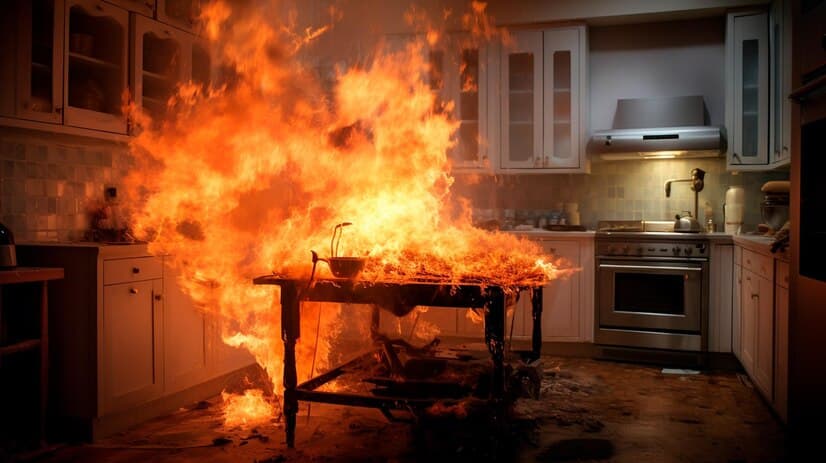Introduction
In the heart of every home or business, the kitchen stands as a bustling hub of activity, where culinary creations come to life and memories are made. Yet, amidst the sizzle of pans and the aroma of spices, lurks a silent but potent threat: the risk of fire. Kitchen fires, whether in residential or commercial settings, can escalate rapidly, posing significant dangers to life and property. In response to this ever-present hazard, kitchen fire suppression systems emerge as indispensable safeguards, offering essential protection against the devastating consequences of uncontrolled flames.
Understanding the Risks
Cooking, by its very nature, involves the use of heat sources, combustible materials, and flammable liquids—elements that create a fertile breeding ground for fires. From grease fires ignited on stovetops to electrical malfunctions sparking flames in commercial kitchens, the potential for disaster looms large. According to the National Fire Protection Association (NFPA), cooking equipment is the leading cause of home structure fires and fire-related injuries, underscoring the urgency of addressing this pervasive risk.
The Role of Kitchen Fire Suppression Systems
Kitchen fire suppression systems serve as frontline defenses against the outbreak and spread of fires in cooking environments. These specialized systems are designed to detect fires swiftly and deploy targeted measures to suppress them, mitigating their impact before they can spiral out of control. Unlike conventional fire extinguishers, which require manual operation, suppression systems are often automated, activating automatically upon sensing signs of a fire. This rapid response can prove invaluable in preventing minor incidents from escalating into full-blown emergencies, thereby safeguarding lives and property.
Types of Suppression Systems
Several types of kitchen fire suppression systems are available, each tailored to address specific fire hazards commonly encountered in cooking environments. Some of the most prevalent types include:
-
Wet Chemical Systems: Primarily used to combat grease fires, wet chemical systems release a fine mist that cools the flames and suppresses their oxygen supply, effectively smothering the fire.
-
Dry Chemical Systems: These systems utilize powdered agents, such as sodium bicarbonate or potassium carbonate, to extinguish fires by interrupting the chemical reaction of combustion.
-
Clean Agent Systems: Clean agent systems deploy environmentally friendly gases, such as carbon dioxide or nitrogen, to rapidly extinguish fires without leaving residue or causing secondary damage.
-
Water Mist Systems: Water mist systems employ a fine mist of water droplets to cool the fire and displace oxygen, suppressing its growth while minimizing water damage to surrounding areas.
Installation and Maintenance Considerations
Proper installation and regular maintenance are crucial for ensuring the effectiveness of kitchen fire suppression systems. Installation should be carried out by qualified professionals in accordance with manufacturer guidelines and local fire codes. Additionally, routine inspections and maintenance checks are essential to verify that the system remains operational and compliant with safety standards. This includes testing sensors, inspecting nozzles and piping, and replenishing extinguishing agents as needed.
Benefits of Kitchen Fire Suppression Systems
Investing in a kitchen fire suppression system offers numerous benefits for both residential and commercial users:
-
Enhanced Safety: By swiftly detecting and suppressing fires, suppression systems minimize the risk of injury to occupants and first responders.
-
Property Protection: Suppression systems help prevent extensive property damage by containing fires at their source and limiting their spread.
-
Business Continuity: For commercial kitchens, the ability to quickly resume operations following a fire incident is critical for maintaining customer satisfaction and business continuity.
-
Insurance Premium Reductions: Installing a kitchen fire suppression system may lead to lower insurance premiums, as insurers recognize the reduced risk of fire-related losses.
Conclusion
In conclusion, kitchen fire suppression systems represent indispensable investments in safety and peace of mind for homeowners and business owners alike. By providing rapid response capabilities and targeted fire suppression measures, these systems offer essential protection against the potentially catastrophic consequences of kitchen fires. Whether in residential kitchens or commercial food establishments, the proactive deployment of suppression systems serves to safeguard lives, property, and livelihoods, ensuring that the heart of every home or business remains a place of warmth, creativity, and security.


No comments yet